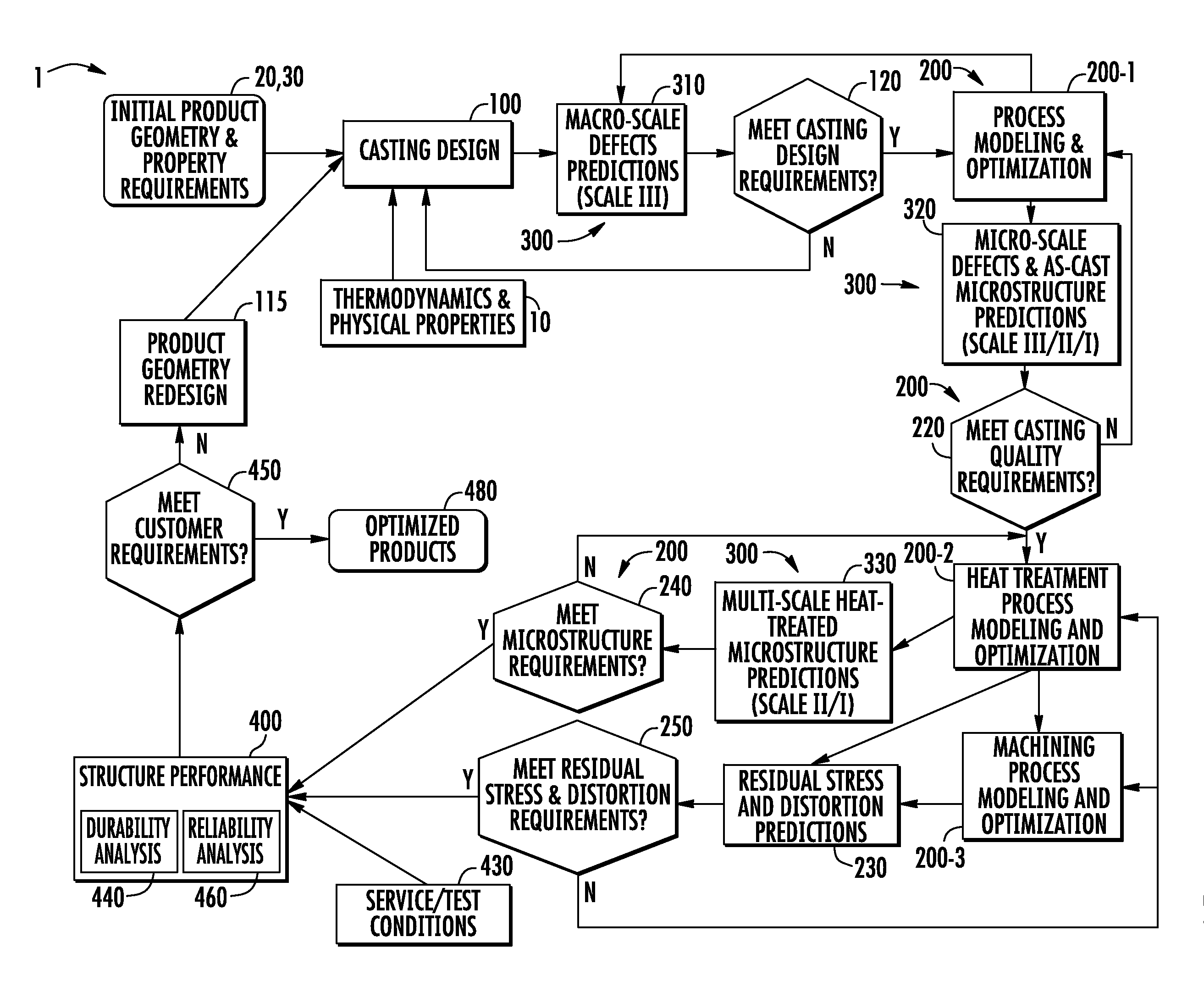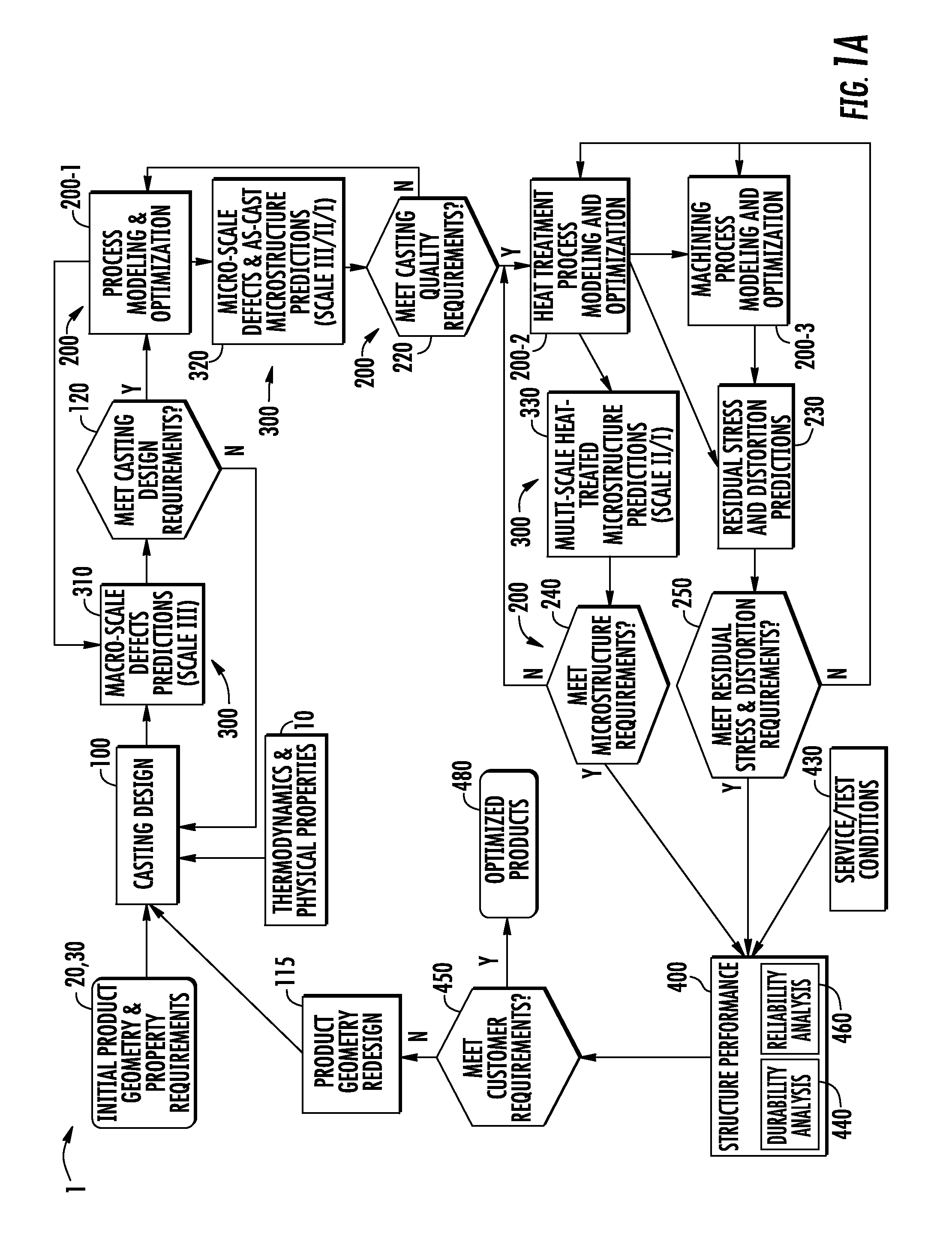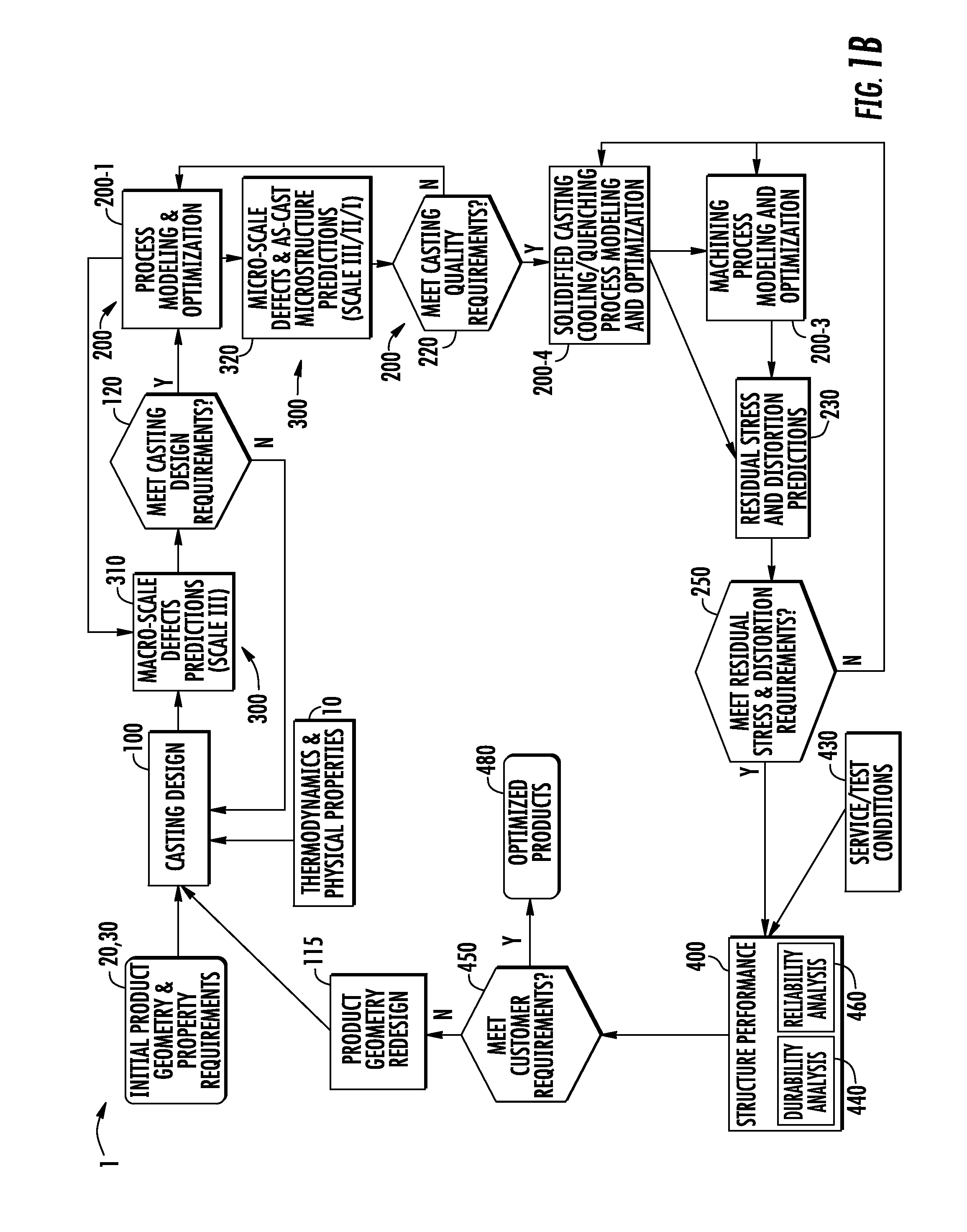Systems and methods for computationally developing manufacturable and durable cast components
a technology of manufacturable and durable cast components and systems, applied in the direction of manufacturing tools, instruments, design optimisation/simulation, etc., can solve the problems of long casting development cycle, less than optimum casting quality, reliability or other indicia of component integrity, and additional complexity
- Summary
- Abstract
- Description
- Claims
- Application Information
AI Technical Summary
Benefits of technology
Problems solved by technology
Method used
Image
Examples
Embodiment Construction
[0035]Referring first to FIG. 1A, the four main computational modules of a VCCD system (also referred to herein as VCCD expert system, virtual casting system, or more simply, a system) 1 are a casting design module 100, a process modeling and optimization module 200, a multiscale defects and microstructure prediction module 300 and a structure performance module 400, all as shown along particular locations of the VCCD system 1 flowpath. The disclosed VCCD system 1 is a particular implementation of CAE and ICME that allows virtual components to be subjected to iterations in design, casting, heat treating and structural and durability assessment in order to optimize the subsequent manufacture of actual equivalents of such components. Particular consideration is given in the VCCD system 1 to casting geometry and gating / riser design optimization, an accurate microporosity determination (rather than mere simplifying assumptions), treatment of larger defects such as mentioned above that a...
PUM
| Property | Measurement | Unit |
|---|---|---|
| size | aaaaa | aaaaa |
| size | aaaaa | aaaaa |
| size | aaaaa | aaaaa |
Abstract
Description
Claims
Application Information
 Login to View More
Login to View More - R&D
- Intellectual Property
- Life Sciences
- Materials
- Tech Scout
- Unparalleled Data Quality
- Higher Quality Content
- 60% Fewer Hallucinations
Browse by: Latest US Patents, China's latest patents, Technical Efficacy Thesaurus, Application Domain, Technology Topic, Popular Technical Reports.
© 2025 PatSnap. All rights reserved.Legal|Privacy policy|Modern Slavery Act Transparency Statement|Sitemap|About US| Contact US: help@patsnap.com



